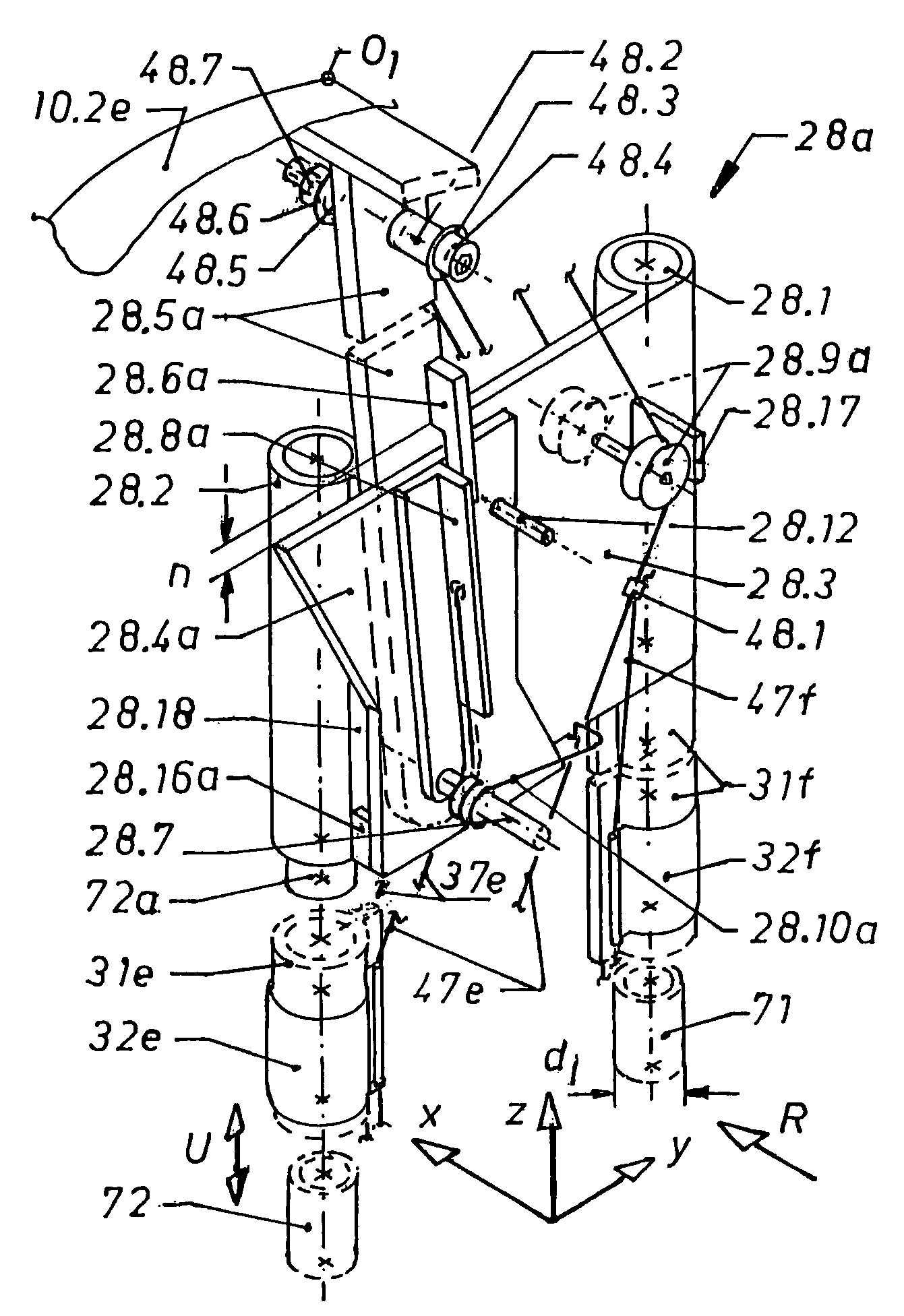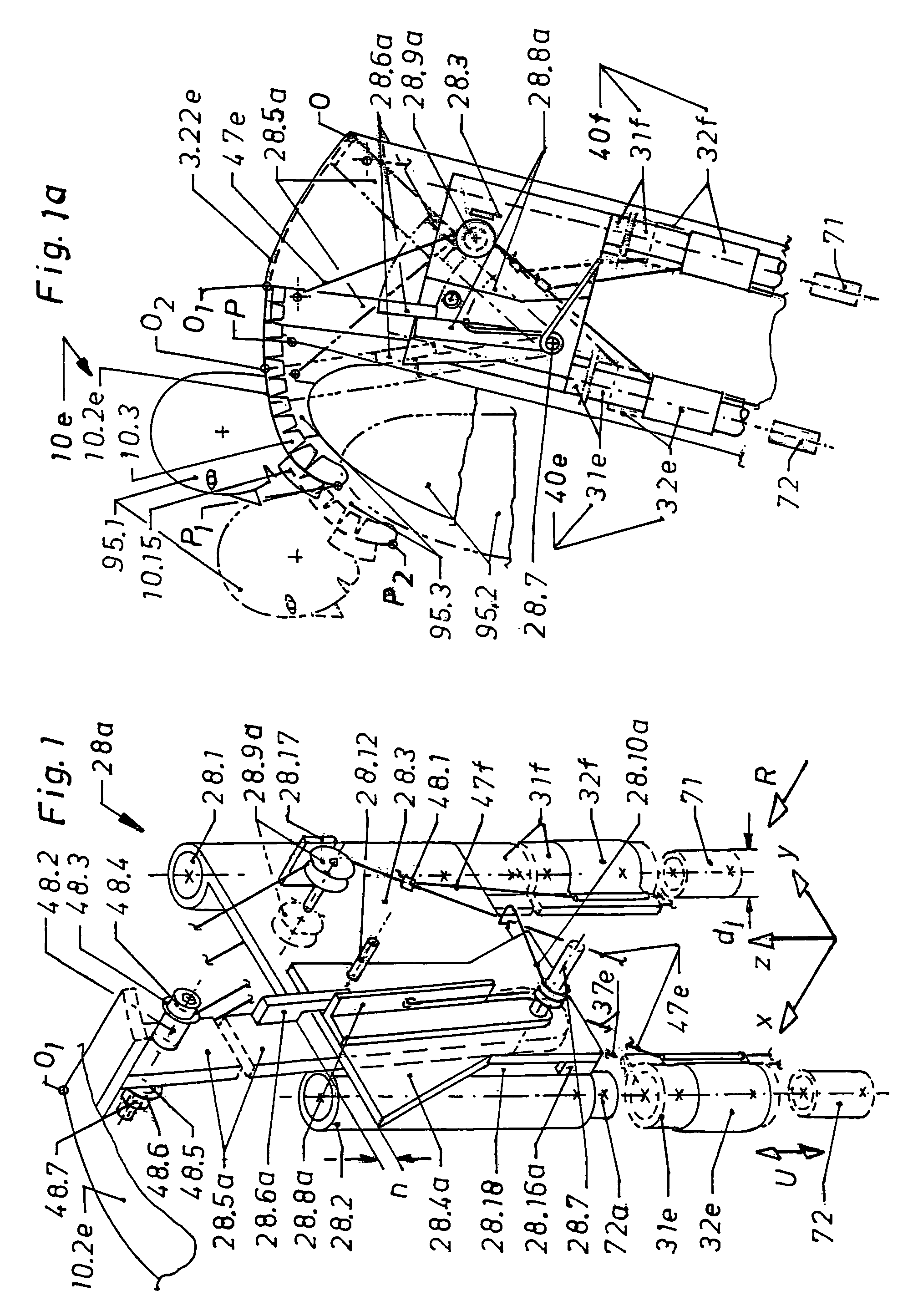Due to lack of restraint systems in trains passengers are not restrained, thus subjected to severe or fatal injury when ejected from the seats in accidents.
It is well known to restrain passengers of aeroplanes by two-point or lap seat belts, which are incapable of restraining the upper part of body as well as head in accidents, particularly associated with sudden turbulence.
Unbelted passengers are not tolerated.
Furthermore, Administrations world-wide would reject motor vehicles, equipped with such restraint devices, thus putting the car manufacturer out of business.
Moreover, all the restraint devices need space, the design is bulky and unattractive.
By no means can child-seats and / or baby cots be installed in the car.
The overall stylish impression of the vehicle is not beneficial to sales.
When cleaning, repairing or stepping in or out of the vehicle body, the passengers, in particular, children can stumble over such devices, unintentionally hit them and / or be obstructed, for example, by the seat harnesses, located in the resting position at the head level, ref. to U.S. Pat. No. 3,392,989.
Evidently, all the restraint devices are incapable of absorbing great energy, dampening strong vibrations, ensuring the restraint of the passengers in any real-world accident, for example, submarining,
rollover, multi-
crash etc.
As a result, passengers are exposed to the danger of being severely / fatally injured and / or burnt alive if the car catches fire.
Passengers are severely / fatally injured in the event of submarining or rolling over.
Unfortunately, sensors are incapable of evaluating
crash data within few milliseconds and responsible for false deployment of airbags, resulting in decapitations, severe / fatal injuries and burns, which are reported in [6 to 8] and EP 0844939 B1 (U.S. Ser. No. 09 / 125,455).
Due to the unreliable operation of sensors car manufacturer has no choice to start recall program, which impairs the reputation and is costly.
No agencies world-wide give approval to motor vehicles, equipped therewith, but without head rests, airbags and seat belts, thus resulting in bankruptcy of the car corp.
Despite being restrained by seat belts passengers are accelerated backwards into the seat backrests in real-world rear collisions, while overstretching their necks over the head rests, bending them backward, overstressing and fracturing them to severe / fatal injuries, when their head rests are adjusted too low and / or rated “dangerous” by Insurance Institute for Highway Safety in Arlington Va.
All these shields, when not used, make an untidy impression.
Apron-shaped chest shields with large cups discriminate women with small bosom and men while apron-shaped chest shields with small cups for obese women won't fit for attractive actresses with large bosom and men.
Apron-shaped chest shields for skinny models won't fit for obese passengers.
Hence, these devices are not beneficial for sales.D3.
Work related to manufacturing a large number of individual members, storing them, delivering and installing appropriate individual members is costly and time-consuming!
When the individual members are laid out for, say, skinny, 1.3 meter tall Asians, all those devices are unfit for 1.6 meter tall Asians and, in particular, for obese, over 2 meter tall passengers.
Because the open rear hook of the chest shield is hooked up to the rear receptacle and
energy absorbers are not provided, under the load of the same belt force in real-world front collisions the deflection of the seat backrest is larger, thus increasing the forward motion as well as the danger of being crushed by an inflating
airbag to death.D5.
For sure, the device fails to restrain an obese, over 150 kg heavy passenger and squeezes him to death in real-world front collisions.
In addition, both cables, vertically extending over his ribs, fracture his ribs, damage his inner organs and squeeze paunch through a space, defined by the lap shield and chest shield, and both shields injure his other inner organs too.D6.
In general, all these individual shields are not popular because finding all three hooks,
hooking up to the respective receptacles and releasing them in three operations are a lengthy process, especially in the dark.
When using the device an actress must pull the collar shield through her head over the upper part of her body, while damaging her hat and hair-style.
For sure, the actress will sue the car corporation, because she, severely injured, can neither appear in the film festival nor act in the film when her face, bosom and / or neck are squeezed by the individual chest and collar shields, all of which made of
metal.
The biggest drawback is the failure to ensure survival chance due to lack of
energy absorbers, shoulder belt portions, extending crosswise in an X-shape over the upper part of the body, and belt retractors, each having a clamping device.In real-world accidents passengers, accelerated by great
impact energy, are crushed into death by the
pelvis studs, each of which, made of
metal, is inwardly rotated by large force to the operative position up to 25 milliseconds.In real-world
rollover accidents passengers, freeing themselves, are thrown into members of cars by great
impact energy and ejected out of their respective cars.In real-world rear collisions passengers, submarining, are severely / fatally injured.In real-world front collisions passengers, freeing themselves due to great forward motion, are severely / fatally injured.E3.
In general, nobody wants to use it because the operation to restrain is a lengthy process.
The operation of attaching the non-standard clasps of the shoulder straps to the
pelvis studs and detaching consumes time, especially in the dark.
lack of agencies' approval of cars, equipped with those life-threatening devices;being sued for compensatory damages of millions of dollars linked to severe / fatal injuries etc.
In general, suspender belts are not popular because all the belt portions make an untidy impression and are not beneficial for sales.F3.
This
suspender belt is lack of energy absorbers and shoulder- and neck holders.
In real-world
rollover accidents passengers, freeing themselves, thrown into members of their respective cars and ejected out of those cars, are severely / fatally injured.
 Login to View More
Login to View More  Login to View More
Login to View More 


